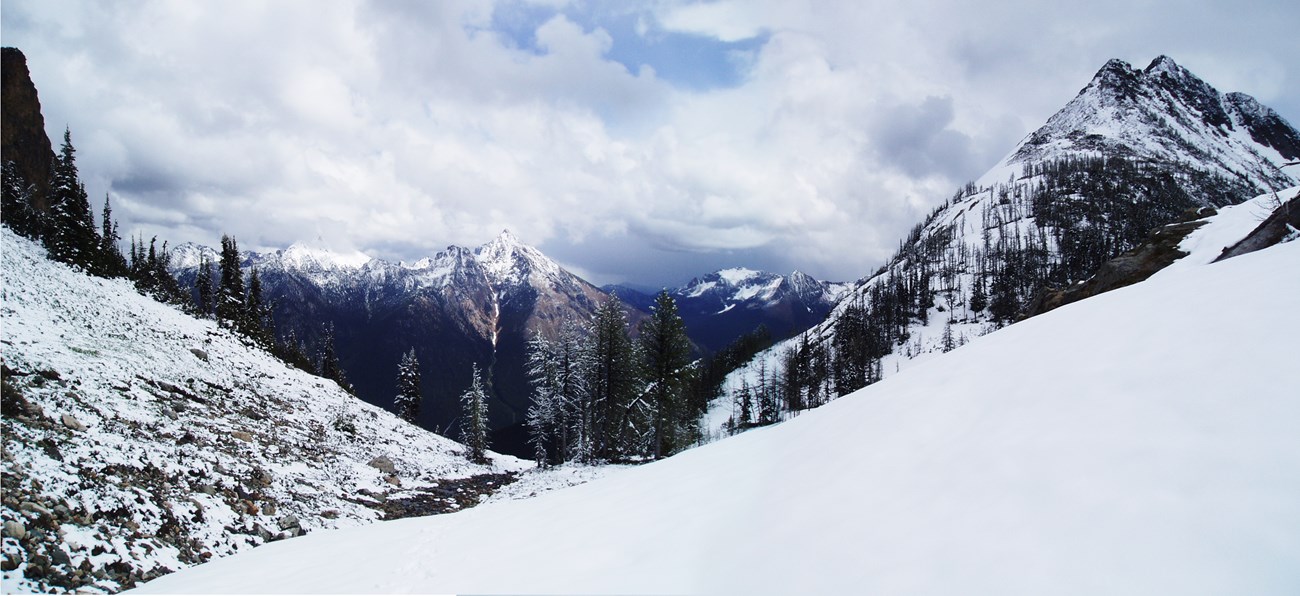
NPS / MICHAEL LIANG Winter recreation in the park offers a unique opportunity for challenge and solitude, but be prepared before setting out. Winter storms may bring downed trees, flooding, trail washouts, and avalanche hazards. WeatherRain and heavy snow, at high elevations, characterize the North Cascades every winter. Be aware that mountain weather changes rapidly - a pleasant outing can quickly be transformed into a survival ordeal. Navigation in harsh winter conditions can be extremely difficult. Before traveling, be sure to check current weather forecasts. RoadsWinter driving conditions in the North Cascades can be hazardous, particularly due to water, frost, snow, and/or ice on the roads. Roads may not be regularly plowed. Always evaluate current and expected conditions and make safe and conservative travel decisions. Cell phone service is very limited in the park complex. Consider bringing a satellite messenger or personal locator beacon. Before leaving home, make sure to check current road conditions and prepare for winter driving. AvalanchesAvalanches are common in winter and spring in the steep mountains of North Cascades. Take caution when recreating during these seasons. Avalanche hazards exist on State Route 20, starting just east of Newhalem. Check local avalanche forecasts, including potential avalanche start zones. Avalanches that begin above or near treeline can slide all the way to the road. Avalanches are most common during or immediately after a storm. For more information visit Northwest Avalanche Center. Winter TravelFor visits during the fall, winter or spring, be prepared for inclement weather. You may encounter heavy rains, snow, high winds, mud, swollen creeks and rivers as well as deep puddles. Always check the latest forecasts before heading out, and make sure to continually assess weather conditions during your trip. Remember, permits are required year round for all overnight stays in the backcountry.
High Country PreparationSnow prevails in the high country much of the year, making avalanche hazard a concern. Trails can be hidden by snow into summer, so map-and-compass navigation skills, general route finding, and common sense are essential. Some high country trails may be covered by 10 to 30 feet of snow. Clothing and equipment should be investigated and tested before the trip. Whiteouts can occur, and cold wet snow is typical. Snow travel in spring and early summer is best done before noon. Afternoon temperatures create "post-holing" conditions and higher avalanche danger to hikers. Camping On SnowAlways camp on snow more than two feet deep. Look for deep snow drifts along sloping terrain; this will help prevent damage to plants or trees buried in the snow pack. Do not cut or damage plants or trees while digging a snow shelter. Beware of camping on avalanche slopes (areas likely to avalanche) and avalanche tracks (areas through which avalanches run). Boil, filter, or chemically treat all ice and water from streams. |
Last updated: November 18, 2024
